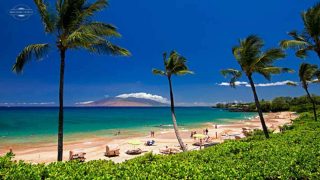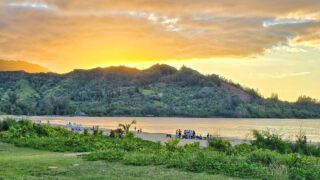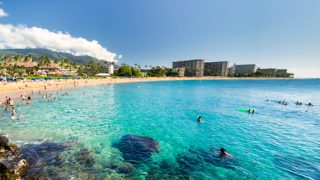When the Hawaii Tourism Authority came to Hilo this week, the hearing room was packed with Big Island residents ready to deliver their verdict on the future of tourism. The message, echoed in testimony after testimony, sounded all too familiar: “Enough is enough.”
In our recent Maui coverage, which garnered more than 500 comments, visitors expressed their sentiments bluntly: “We’re not coming back.” At the same time, we warned that resident pushback was only beginning across the islands, and that the next eruption would come on the Big Island. That moment just arrived.
This wasn’t about marketing plans or spreadsheets. It was a raw mix of frustration, anger, and a growing demand to rein in an industry that has long shaped Hawaii’s economy.
Big Island residents echo tourism backlash.
If the language from residents felt sharp, that is because the same themes have been building elsewhere. Maui visitors are still reeling from Bill 9 and the proposed sweeping ban on vacation rentals. In that debate, residents argued that the visitor industry had run its course, that vacation rentals were squeezing them out of housing, and that their island could no longer sustain the load.
Now it is Hawaii Island’s turn to take the HTA microphone, and the similarities are striking. People spoke about crowded beaches, overused parks, and a sense that the island is being asked to carry more visitors than it can handle. Just as on Maui, the mood is shifting away from how to grow tourism and toward how to manage it.
At the same time, some residents pushed back on the idea that this is simply about tourists feeling unwelcome. One voice said:
“As someone born and raised in Hawaii, it feels as if there is no concern for the bigger issues of the island. We understand that people love to come here, and we love to have visitors, but when the cost of housing, natural resources, or just basic access to clean drinking water is being drastically impacted by the tourist industry, at what point do you feel your vacation is justified?”
Visitors keep asking the obvious question.
Are we still welcome? That is what many of you have been writing to us, and the question now hangs over trips planned to Kona, Hilo, Volcano, or the Kohala Coast.
This is not an abstract debate. It runs through hotel development, vacation rentals, traffic, beach access, and even the way residents greet visitors.
Hawaii Island has long branded itself as the wide-open adventure island, with lava fields, telescopes, black sand beaches, and Mauna Kea’s summit, all spread out. But if residents continue to push back, the balance between visitor access and local protection could shift quickly.
Some visitors are uneasy, saying the Aloha spirit they once relied on feels less certain. Others, however, point to how expensive a trip has become and wonder aloud if pricing alone is doing more to push them away than attitudes ever could. At the same time, residents counter that their daily lives are on the line. As one voice put it, when housing, water, and basic access are stretched so thin, asking for more visitors feels like asking people here to give up even more.
Residents cite strain on infrastructure.
At the Hilo hearing, community members highlighted roads, water, and waste systems that were never designed to accommodate today’s visitor volume. Hawaii County has already issued an emergency proclamation for the Hilo wastewater treatment plant, which processes about 3 million gallons a day and is now slated for a $337 million rehabilitation. That project, officials said, underscores how fragile basic services have become under the weight of residents and visitors combined.
“Affordable housing is a must. First, take care of the citizens. We will return when we feel that the issues have been resolved.”
Hawaii Tourism Authority under fire.
The HTA has spent years trying to recalibrate its mission. Marketing contracts have been rewritten to emphasize regenerative tourism, while visitor counts are now described as something to manage, not simply to increase. But the authority continues to struggle with both direction and trust.
At the Big Island meeting, residents accused HTA of listening more to industry partners than to the people who live with tourism’s consequences. Many called for hard caps on visitor numbers, tighter controls on short-term rentals, and direct investment in housing, infrastructure, and cultural preservation rather than another round of ad campaigns.
One reader summed up the frustration this way: “So HTA ended, and nothing changed. Tourists are still coming. This means the HTA budget of 60+ million was being wasted. From now on, let’s use the TAT to maintain public restrooms, etc. and not waste it on advertising Hawaii to people who will come anyway.”
HTA officials repeated their commitment to balancing community needs with visitor demand, but the mood in Hilo made clear that residents are losing patience.
Tourism slowdown hits Las Vegas and beyond.
Even Las Vegas, a tourism giant, is experiencing declines, with occupancy rates nationwide dropping. Luxury hotels and high-end leisure travel remain resilient, but budget trips and international visitation are slipping.
Some destinations are showing real strain. Las Vegas visitor counts are down by double digits, and mountain resort towns on the mainland report falling occupancy even as room rates keep climbing. Analysts say the post-pandemic travel surge is cooling, with pent-up demand finally easing under the pressure of high prices.
For Hawaii Island residents, this national slowdown is being interpreted in two very different ways. Some see it as overdue relief for communities stretched thin. Others tied to hotels, tours, and restaurants view it as an economic warning sign. The divide between those positions is growing sharper, and the testimony in Hilo only underscored how little common ground remains to be found.
What it means for travelers.
For Hawaii visitors, these debates are not just politics in an island council chamber. They land squarely on your vacation plans. Sentiment and even planned restrictions on future rentals could leave you scrambling for places to stay, with fewer options and higher prices if the Big Island follows Maui’s path. Hotels know this.
The other shift is more subtle. A trip that once felt carefree is now layered with uncertainty. Will the condo you booked still be legal by the time you arrive? Will new rules close off a favorite beach or hiking spot? That constant question mark changes how people plan and how they feel, long before they ever set foot on the plane. No slogan or ad campaign can fix that. Hawaii visitors feel it the moment they step off the plane.
The fragile future.
Hawaii Island is now caught in the same storm every island seems destined to face. Oahu tried bans and controls on popular hikes and beaches, as well as a 90-day rental rule, but these measures ultimately failed. Maui’s fight over short-term rentals has become a national headline. And now residents on the Big Island are raising their hands to say enough.
Where it goes from here will hinge on county leaders, lawsuits, and how hard residents decide to press. What is already certain is that Hawaii’s visitor industry is being forced to defend itself in ways not seen in a generation — and perhaps not seen at all since the rise of modern tourism.
Your voice matters.
If you live on Hawaii Island, how do you think this will play out? If you are planning a trip there, are you rethinking it? Do you still feel welcome?
Share your thoughts below. This isn’t an abstract policy debate. It’s about the future of the islands we call home, and about the experience you have the moment you step off the plane.
Lead Photo Credit: Beat of Hawaii at Mauna Kea Beach Hotel on Big Island.
Get Breaking Hawaii Travel News







I have always loved Hawaii for many reasons, but especially for the warmth, friendliness and attitude of those Hawaiians working in the tourism service industries. As a tourist, I am always respectful and undemanding. If I now have to worry about my business not being wanted and appreciated, I would rather stay home.
Regarding the big island, what are you planning to diversify to, away from tourism?
Are you willing to educate yourselves to compete against businesses located on the mainland?
If your job depends on tourism, how are you planning to support yourselves with less tourism?
It all sounds great “less tourists” but I have yet to see any answers as to what Hawaii will do without tourism. Is it wise to kill the golden goose without a go to solution?
Hi Dee: good questions indeed! It does seem practical to know what would replace tourism when it trails off as seems to be desired (by some, maybe a majority? Hard to tell how pervasive that sentiment is). If the replacement is unknown, that could lead to a big shock that locals would need to prepare for. I do wish for diversification away from tourism, but it could be a rough road to get there…if there is a road. I hope so, as tough as that might be.
I didn’t read they are trying to end tourism. They want to manage it much better. The entire world is going through this right now. Have you been to any National Park lately. Since China became wealthy, that has Doubled the number of worldwide tourists. Read about the German town of 18,000 that now has one million Chinese visitors per year. This is happening all over the globe. Spain, Mexico, Canada, the US, you name it. Even Thailand is closing the gates.
And that drove Investors into these areas literally knocking out affordability.